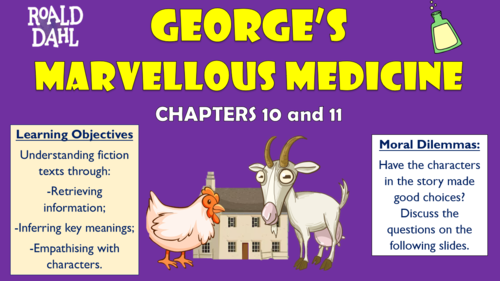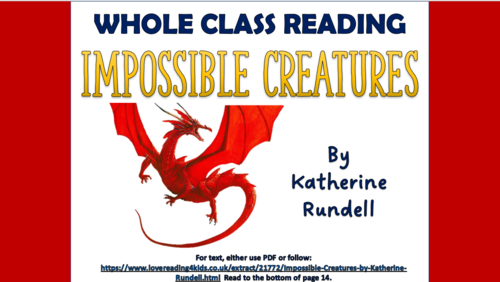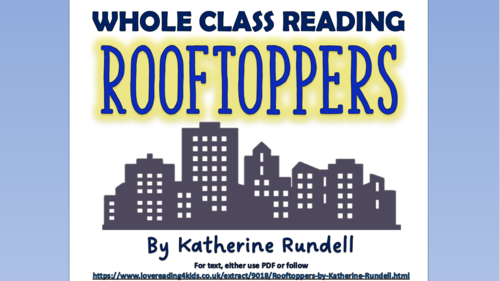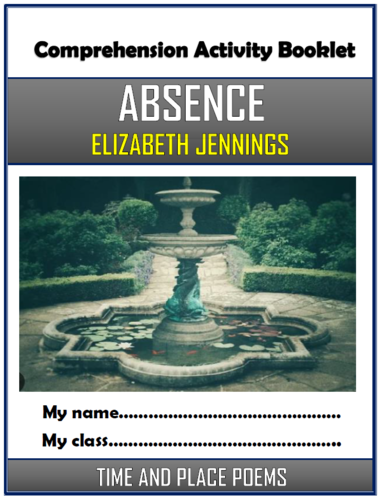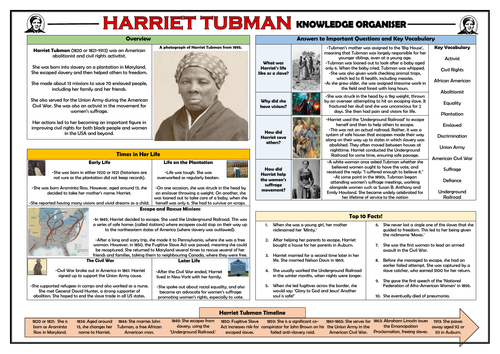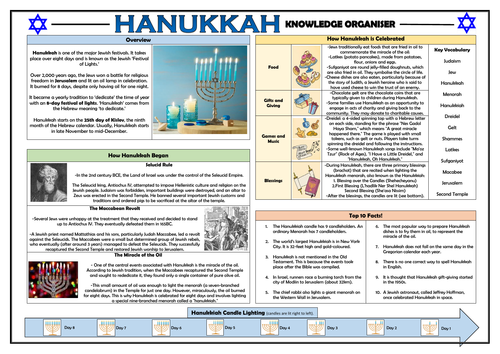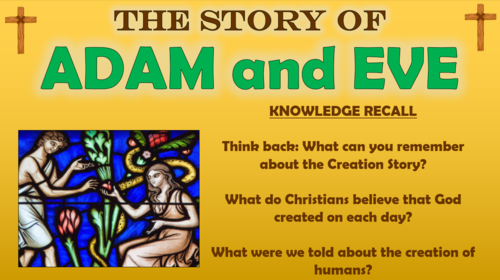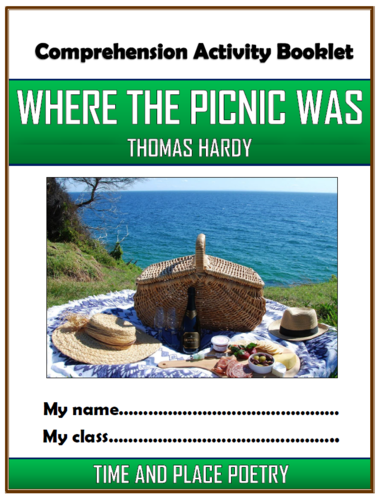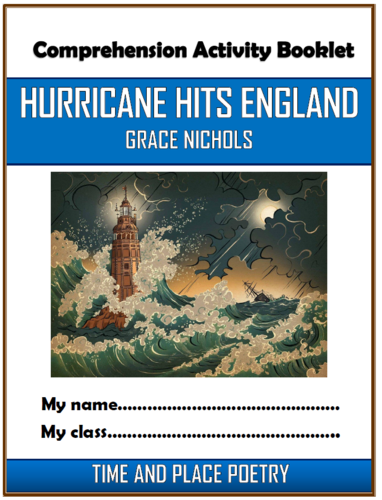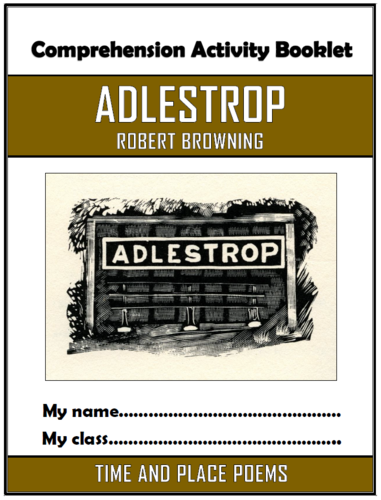
3k+Uploads
1951k+Views
2270k+Downloads
Whole school

Whole Class Reading Session - Sonnet 18 - Shall I Compare thee to a Summer's Day?
This whole class reading session aims to develop children’s fluency and comprehension skills through reading William Shakespeare’s Sonnet 18: ‘Shall I Compare thee to a Summer’s Day?’
The reading is followed by a series of activities aiming to develop comprehension skills through VIPERS activities: vocabulary, inference, prediction, explanation, retrieval, and summarising. It also contains a vocabulary check and key context information to clarify any unfamiliar language and subject matter.
The tasks are comprised of quick-check questions, solo thinking, pair/ group discussions and deeper thinking activities. The extract needed is provided in both Word and PDF, and I’ve also a link to a web-based version of the poem on the first slide.
The session is tried and tested, and was initially delivered to a strong year 6 class, although with only minor adaptations I believe the questions and content would be suitable for those in years 5-8.

Oi, Cave Boy - Whole Class Reading Session!
This whole class reading session aims to develop children’s fluency and comprehension skills through reading an extract from the beginning of Oi, Cave Boy! by Alan MacDonald.
The reading is followed by a series of activities aiming to develop children’s VIPERS skills: vocabulary, inference, prediction, explanation, retrieval, sequencing and summarising. It also contains a vocabulary check immediately after the extract is read to clarify any unfamiliar/ difficult language.
The tasks are comprised of quick-check questions, solo thinking, pair/ group discussions and deeper thinking activities. The extract needed is provided as a PDF and a link to a web-based version is also included on the first slide.
The session is best suited for children in KS2 - in the past, I have used the resources in the past with children in years 3 and 4.

George's Marvellous Medicine - Chapters 10 and 11 - Double Lesson!
This engaging and thought-provoking double-lesson resource aids students in developing a secure understanding of chapters 10 and 11 of Roald Dahl’s ‘George’s Marvellous Medicine.’ The chapters covered in these lessons are ‘A Crane for Grandma’ and 'Mr Kranky’s Great Idea.’
The lessons are guided by a comprehensive and colourful PowerPoint presentation, and enables students to understand the text through:
-Retrieving information;
-Inferring hidden meanings;
-Empathising with characters.
The sessions include a range of retrieval, vocabulary, inference, explanation and deeper thinking activities. A clear, colourful and comprehensive PowerPoint presentation guides students through the learning.
There’s a lot in the session (19 slides in total) so I would recommend breaking into two lessons. The lessons are most suitable for children in upper key stage 1 or lower key stage 2, (they have been used in the past with children in years 2 and 3) but they could also be adapted for slightly older and younger year groups.

George's Marvellous Medicine - Chapters 1 and 2 - Double Lesson!
This engaging and thought-provoking double-lesson resource aids students in developing a secure understanding of the chapters 1 to 2 of Roald Dahl’s 'George’s Marvellous Medicine.’ The chapters covered in these lessons are ‘Grandma’ and ‘The Marvellous Plan.’
The lessons are guided by a comprehensive and colourful PowerPoint presentation, and enables students to understand the text through:
-Making predictions;
-Retrieving information;
-Inferring and deducing hidden meanings.
The sessions include a range of retrieval, vocabulary, inference, explanation and deeper thinking activities. A clear, colourful and comprehensive PowerPoint presentation guides students through the learning. A worksheet/ template is also provided for the creative medicine activity (in both Word and PDF format).
There’s a lot in the session (20 slides in total) so I would recommend breaking into two lessons. The lessons are most suitable for children in upper key stage 1 or lower key stage 2, (they have been used in the past with children in years 2 and 3) but they could also be adapted for slightly older and younger year groups.

Impossible Creatures - Whole Class Reading Session!
This whole class reading session aims to develop children’s comprehension skills through reading and interpreting the opening section of Katherine Rundell’s ‘Impossible Creatures.’
The resource pack includes the extract needed and a clear and well presented PowerPoint, guiding the teacher and learners through the various activities. The reading is followed by a series of activities aiming to develop children’s retrieval, explanation, inference, sequencing and summarising skills. A vocabulary check helps to secure children’s understanding of any new or unfamiliar language.
The tasks are comprised of quick-check questions, solo thinking, pair/ group discussions and deeper thinking activities.
The session is best suited for children in years 5-6, although with minor adaptations it could feasibly be used with slightly younger and older year groups.

Rooftoppers - Whole Class Reading Session!
This whole class reading session aims to develop children’s comprehension skills through reading and interpreting the opening section of Katherine Rundell’s ‘Rooftoppers.’
The resource pack includes the extract needed and a clear and well presented PowerPoint, guiding the teacher and learners through the various activities. The reading is followed by a series of activities aiming to develop children’s retrieval, explanation, inference, sequencing and summarising skills. A vocabulary check helps to secure children’s understanding of any new or unfamiliar language.
The tasks are comprised of quick-check questions, solo thinking, pair/ group discussions and deeper thinking activities.
The session is best suited for children in years 5-6, although with minor adaptations it could feasibly be used with slightly younger and older year groups.

Macbeth - Whole Class Reading Session!
This whole class reading session aims to develop children’s fluency and comprehension skills through reading an adaptation of William Shakespeare’s ‘Macbeth’. The adaptation was created by Neil Richards for BBC Teach, and the whole class reading session focuses explicitly on the first four acts.
The reading is followed by a series of activities aiming to develop comprehension skills through VIPERS activities: vocabulary, inference, prediction, explanation, retrieval, and summarising. It also contains a vocabulary check and key context information to clarify any unfamiliar language and subject matter.
The tasks are comprised of quick-check questions, solo thinking, pair/ group discussions and deeper thinking activities. The extract needed is provided as PDF, but I’ve also a link to a web-based version of the playscript on the first slide.
The session is tried and tested, and was initially delivered to a high-attaining year 6 class, although with only minor adaptations I believe the questions and content would be suitable for those in years 5-8.

Stig of the Dump - Chapter 2 - Digging with Stig!
This engaging and thought-provoking lesson aids students in developing a secure understanding of Chapter 2 of Clive King’s 'Stig of the Dump.’ This chapter is entitled ‘Digging with Stig.’
The resources guide the children along a learning journey in which they understand the text through:
-Retrieving information;
-Inferring and deducing hidden meanings;
-Explaining key ideas;
-Sequencing the key events of the chapter.
Children are guided through the lesson via a colourful and comprehensive PowerPoint explanation, which includes a range of thought-provoking activities and model examples/ answers. The tasks are comprised of retrieval, vocabulary, inference, summarising, explaining and deeper thinking activities. Children also get the opportunity to partake in a creative activity at the end of the lesson.
There’s a lot in the session (16 slides in total) so you may wish to either select the content that is pertinent to you/ your class or spread the lesson resource over two sessions. The resource is ideally pitched for children in lower KS2, but could feasibly be used with slightly older or younger children, depending upon the individual context of the school and students.

Matthew Henson - Knowledge Organiser!
This clear, detailed and visually-appealing resource offers a complete reference point for children learning about Matthew Henson, particularly those studying significant individuals/ explorers from across history. It contains comprehensive sections entitled:
Overview;
Times in His Life;
Important Vocabulary;
Matthew Henson Timeline;
Answers to the Important Questions;
Top Ten Facts.
The resource is designed to be printed onto A3, and is provided as both a PDF and a Word version (so that you can edit if you want to). All images used are licensed for commercial use.

Postcard From A Travel Snob - Comprehension Activities Booklet!
This 16-page resource booklet contains a wide range of challenging and engaging comprehension activities for use throughout the reading of Sophie Hannah’s 'Postcard From A Travel Snob.’ They are perfect for aiding the progress of students learning poetry either in KS4 (or for higher attaining KS3 students) in preparation for poetry at GCSE, as the tasks draw on English Literature assessment objectives - suitable for all examining bodies - it is clearly highlighted within each task regarding which assessment strands the task is designed to demonstrate.
The booklet is provided in both Word (to allow for easy editing) and PDF (to ensure for consistency of formatting between computers).
Activities within the booklet include (amongst many others):
‘Analysing Context’ - helping students to ‘Show understanding of the relationships between texts and the contexts in which they were written.’
‘Analysing Subject Matter, Language and Structure’ - to help students to ‘Analyse the language, form and structure used by a writer to create meanings and effects, using relevant subject terminology where appropriate.’
‘Diary Entry’ - to help students to ‘Use a range of vocabulary and sentence structures for clarity, purpose and effect, with accurate spelling and punctuation. Make an informed personal response, recognising that other responses to a text are possible and evaluating these.’
‘The Speaker’ - to help students to ‘Read, understand and respond to texts. Students should be able to: maintain a critical style and develop an informed personal response use textual references, including quotations, to support and illustrate interpretations.’
All images are licensed for commercial use.

Absence - Elizabeth Jennings - Comprehension Activities Booklet!
This 16-page resource booklet contains a wide range of challenging and engaging comprehension activities for use throughout the reading of Elizabeth Jennings’ 'Absence.’ They are perfect for aiding the progress of students learning poetry either in KS4 (or for higher attaining KS3 students) in preparation for poetry at GCSE, as the tasks draw on English Literature assessment objectives - suitable for all examining bodies - it is clearly highlighted within each task regarding which assessment strands the task is designed to demonstrate.
The booklet is provided in both Word (to allow for easy editing) and PDF (to ensure for consistency of formatting between computers).
Activities within the booklet include (amongst many others):
‘Analysing Context’ - helping students to ‘Show understanding of the relationships between texts and the contexts in which they were written.’
‘Analysing Subject Matter, Language and Structure’ - to help students to ‘Analyse the language, form and structure used by a writer to create meanings and effects, using relevant subject terminology where appropriate.’
‘Diary Entry’ - to help students to ‘Use a range of vocabulary and sentence structures for clarity, purpose and effect, with accurate spelling and punctuation. Make an informed personal response, recognising that other responses to a text are possible and evaluating these.’
‘The Speaker’ - to help students to ‘Read, understand and respond to texts. Students should be able to: maintain a critical style and develop an informed personal response use textual references, including quotations, to support and illustrate interpretations.’
All images are licensed for commercial use.

Fireworks Night Assembly!
This fun and original assembly is designed to teach children all about Firework Night, including:
-Why we have firework night (the Gunpowder Plot);
-Why firework night is fun for so many people;
-How firework night can be dangerous without safety precautions;
-Top tips for staying safe on firework night.
The slides are visually-engaging and well-presented, and the subject matter is tailored to the interests and needs of young people. A script is provided (in both Word and PDF formats) for playing out the events of the gunpowder plot. It includes links to well-chosen videos to emphasise/ reinforce key points, in addition to suggested entrance and exit music.
There is enough here for a 30/ minute assembly (it is 17 slides long, plus a 3 page script), but of course you can cut bits out/ tailor to your own individual needs. No further resources are required, everything that you need to present the assembly is included.The assembly was originally pitched at primary-aged children (KS1-KS2), but would be suitable for older children with only minor vocabulary/ language adaptations.
The assembly is tried and tested and has always been received well. Hope that you find it useful!

Harriet Tubman - Knowledge Organiser!
This clear, detailed and visually-appealing resource offers a complete reference point for children learning about Harriet Tubman, particularly those studying ‘Significant Individuals’ in history or learning about civil rights activists in PSHE (or significant black individuals during Black History Month). It contains comprehensive sections entitled:
Overview;
Times in Her Life;
Important Vocabulary;
Harriet Tubman Timeline;
Answers to the Important Questions;
Top Ten Facts.
The resource is designed to be printed onto A3 or A4, and is provided as both a PDF and a Word version (so that you can edit if you want to). All images used are licensed for commercial use.

Hanukkah Knowledge Organiser!
This detailed and visually-appealing resource offers a complete reference point for students learning about/ revising their understanding of Hanukkah. It contains comprehensive sections under the following headings:
-Hanukkah Overview;
-How Hanukkah Began;
-How Hanukkah is Celebrated;
-Lighting the Hanukkiah Candle;
-Key Vocabulary;
-Top Ten Facts;
Key words and ideas are underlined for easy reference. The resource is designed to be printed onto A3 or A4, and is provided as both a PDF and a Word version (so that you can edit if you want to).

Adam and Eve - Assembly/ Collective Worship!
This engaging and original assembly/ collective worship session aims to provide children with an understanding of the parable of the story of Adam and Eve and ‘The Fall’, with a key focus on its moral meanings and how they can be applied in modern life.
The colourful and comprehensive presentation guides children through:
-Remembering what the Bible teaches about creation in Genesis 1;
-Watching a video about the creation of humans and understanding that Christians believe that Man was made in God’s image;
-Reading the story of ‘The Fall’ (using the script provided - this works best when children read/ play the different roles);
-Demonstrating an understanding of the story by answering questions about the plot events;
-Reflecting on the deeper meanings of the story - how people are imperfect and have free will, but have a responsibility to look after the world around them;
-Considering how these teachings apply in the modern world;
-Considering how they can apply the key message to their own lives;
-Participating in related song and prayer.
This worship session is tried and tested, and has always been really well received in the past. The slides are visually engaging and well-presented, and the subject matter is tailored to the interests and needs of young people. If everything is kept in, it takes around 30 minutes to deliver, but you may choose to edit or amend some elements of the session.
All links to videos/ hymns are included in the PowerPoint as hyperlinks. No further resources are required - everything that you need to present the session is included!

Where the Picnic Was - Comprehension Activities Booklet!
This 16-page resource booklet contains a wide range of challenging and engaging comprehension activities for use throughout the reading of Thomas Hardy’s poem 'Where the Picnic Was.’ They are perfect for aiding the progress of students learning poetry either in KS4 (or for higher attaining KS3 students) in preparation for poetry at GCSE, as the tasks draw on English Literature assessment objectives - suitable for all examining bodies - it is clearly highlighted within each task regarding which assessment strands the task is designed to demonstrate.
The booklet is provided in both Word (to allow for easy editing) and PDF (to ensure for consistency of formatting between computers).
Activities within the booklet include (amongst many others):
‘Analysing Context’ - helping students to ‘Show understanding of the relationships between texts and the contexts in which they were written.’
‘Analysing Subject Matter, Language and Structure’ - to help students to ‘Analyse the language, form and structure used by a writer to create meanings and effects, using relevant subject terminology where appropriate.’
‘Diary Entry’ - to help students to ‘Use a range of vocabulary and sentence structures for clarity, purpose and effect, with accurate spelling and punctuation. Make an informed personal response, recognising that other responses to a text are possible and evaluating these.’
‘The Speaker’ - to help students to ‘Read, understand and respond to texts. Students should be able to: maintain a critical style and develop an informed personal response use textual references, including quotations, to support and illustrate interpretations.’
All images are licensed for commercial use.

Hurricane Hits England - Comprehension Activities Booklet!
This 16-page resource booklet contains a wide range of challenging and engaging comprehension activities for use throughout the reading of Grace Nichols’ poem 'Hurricane Hits England.’ They are perfect for aiding the progress of students learning poetry either in KS4 (or for higher attaining KS3 students) in preparation for poetry at GCSE, as the tasks draw on English Literature assessment objectives - suitable for all examining bodies - it is clearly highlighted within each task regarding which assessment strands the task is designed to demonstrate.
The booklet is provided in both Word (to allow for easy editing) and PDF (to ensure for consistency of formatting between computers).
Activities within the booklet include (amongst many others):
‘Analysing Context’ - helping students to ‘Show understanding of the relationships between texts and the contexts in which they were written.’
‘Analysing Subject Matter, Language and Structure’ - to help students to ‘Analyse the language, form and structure used by a writer to create meanings and effects, using relevant subject terminology where appropriate.’
‘Diary Entry’ - to help students to ‘Use a range of vocabulary and sentence structures for clarity, purpose and effect, with accurate spelling and punctuation. Make an informed personal response, recognising that other responses to a text are possible and evaluating these.’
‘The Speaker’ - to help students to ‘Read, understand and respond to texts. Students should be able to: maintain a critical style and develop an informed personal response use textual references, including quotations, to support and illustrate interpretations.’
All images are licensed for commercial use.

Home Thoughts, from Abroad - Comprehension Activities Booklet!
This 16-page resource booklet contains a wide range of challenging and engaging comprehension activities for use throughout the reading of Robert Browning’s poem 'Home Thoughts, from Abroad.’ They are perfect for aiding the progress of students learning poetry either in KS4 (or for higher attaining KS3 students) in preparation for poetry at GCSE, as the tasks draw on English Literature assessment objectives - suitable for all examining bodies - it is clearly highlighted within each task regarding which assessment strands the task is designed to demonstrate.
The booklet is provided in both Word (to allow for easy editing) and PDF (to ensure for consistency of formatting between computers).
Activities within the booklet include (amongst many others):
‘Analysing Context’ - helping students to ‘Show understanding of the relationships between texts and the contexts in which they were written.’
‘Analysing Subject Matter, Language and Structure’ - to help students to ‘Analyse the language, form and structure used by a writer to create meanings and effects, using relevant subject terminology where appropriate.’
‘Diary Entry’ - to help students to ‘Use a range of vocabulary and sentence structures for clarity, purpose and effect, with accurate spelling and punctuation. Make an informed personal response, recognising that other responses to a text are possible and evaluating these.’
‘The Speaker’ - to help students to ‘Read, understand and respond to texts. Students should be able to: maintain a critical style and develop an informed personal response use textual references, including quotations, to support and illustrate interpretations.’
All images are licensed for commercial use.

Adlestrop - Comprehension Activities Booklet!
This 16-page resource booklet contains a wide range of challenging and engaging comprehension activities for use throughout the reading of Edward Thomas’ 'Adlestrop.’ They are perfect for aiding the progress of students learning poetry either in KS4 (or for higher attaining KS3 students) in preparation for poetry at GCSE, as the tasks draw on English Literature assessment objectives - suitable for all examining bodies - it is clearly highlighted within each task regarding which assessment strands the task is designed to demonstrate.
The booklet is provided in both Word (to allow for easy editing) and PDF (to ensure for consistency of formatting between computers).
Activities within the booklet include (amongst many others):
‘Analysing Context’ - helping students to ‘Show understanding of the relationships between texts and the contexts in which they were written.’
‘Analysing Subject Matter, Language and Structure’ - to help students to ‘Analyse the language, form and structure used by a writer to create meanings and effects, using relevant subject terminology where appropriate.’
‘Diary Entry’ - to help students to ‘Use a range of vocabulary and sentence structures for clarity, purpose and effect, with accurate spelling and punctuation. Make an informed personal response, recognising that other responses to a text are possible and evaluating these.’
‘The Speaker’ - to help students to ‘Read, understand and respond to texts. Students should be able to: maintain a critical style and develop an informed personal response use textual references, including quotations, to support and illustrate interpretations.’
All images are licensed for commercial use.

Presents from My Aunts in Pakistan - Comprehension Activities Booklet!
This 16-page resource booklet contains a wide range of challenging and engaging comprehension activities for use throughout the reading of Moniza Alvi’s 'Presents from My Aunts in Pakistan.’ They are perfect for aiding the progress of students learning poetry either in KS4 (or for higher attaining KS3 students) in preparation for poetry at GCSE, as the tasks draw on English Literature assessment objectives - suitable for all examining bodies - it is clearly highlighted within each task regarding which assessment strands the task is designed to demonstrate.
The booklet is provided in both Word (to allow for easy editing) and PDF (to ensure for consistency of formatting between computers).
Activities within the booklet include (amongst many others):
‘Analysing Context’ - helping students to ‘Show understanding of the relationships between texts and the contexts in which they were written.’
‘Analysing Subject Matter, Language and Structure’ - to help students to ‘Analyse the language, form and structure used by a writer to create meanings and effects, using relevant subject terminology where appropriate.’
‘Diary Entry’ - to help students to ‘Use a range of vocabulary and sentence structures for clarity, purpose and effect, with accurate spelling and punctuation. Make an informed personal response, recognising that other responses to a text are possible and evaluating these.’
‘The Speaker’ - to help students to ‘Read, understand and respond to texts. Students should be able to: maintain a critical style and develop an informed personal response use textual references, including quotations, to support and illustrate interpretations.’
All images are licensed for commercial use.



